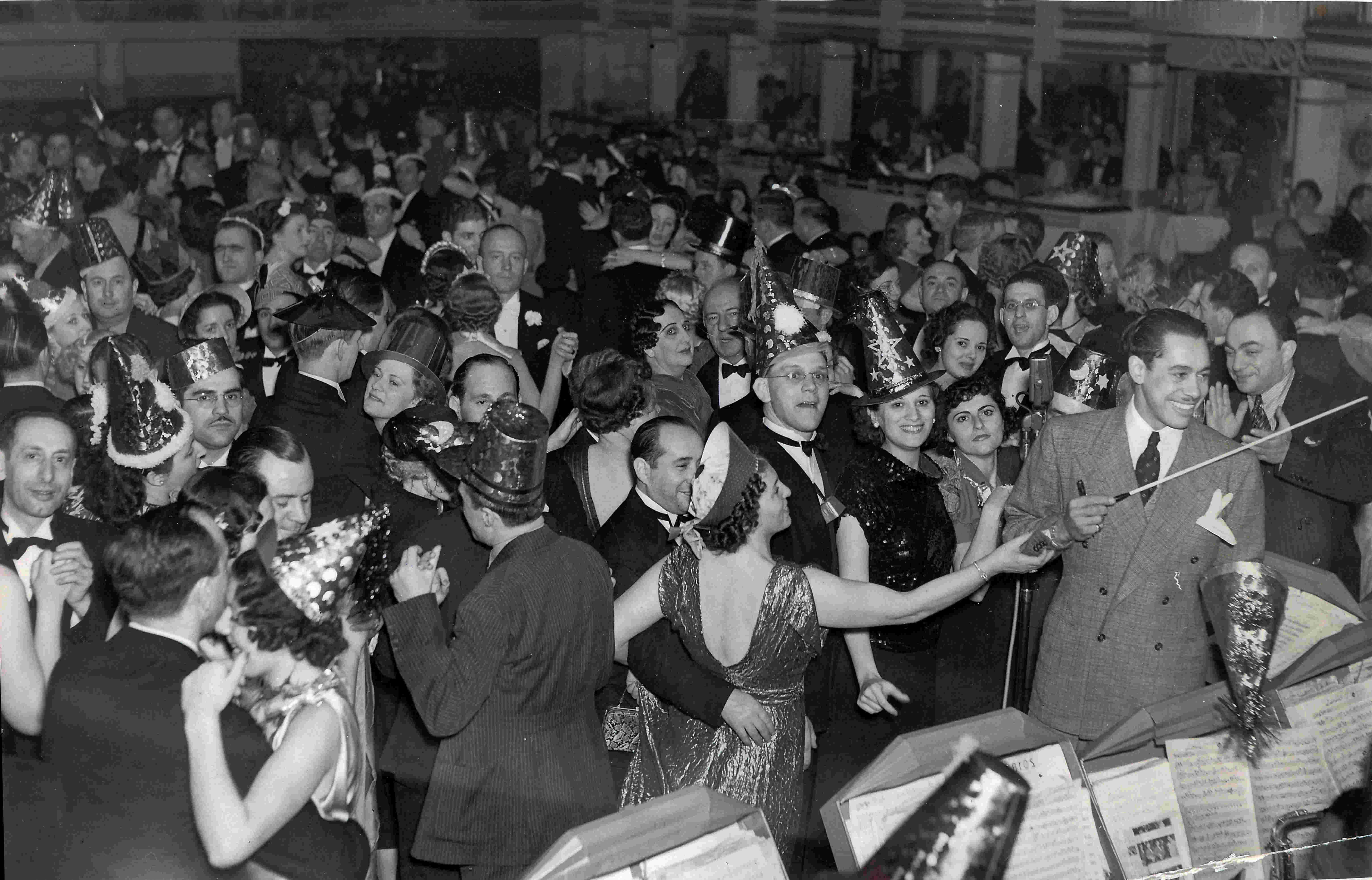20th COTTON CLUB PARADE (April 10, 1932 - September 12, 1932)
Staged at the Harlem Cotton Club
- Lyrics by Ted Koehler
- Music by Harold Arlen
- Stage produced by Dan Healy, assisted by Leonard Ruffin
- Choreography: Elida Webb
- Featured Star: Cab Calloway
Songs performed during the revue (in order):
- Raisin’ Hades in Green Pastures
- You Gave Me Everything But Love
- Let’s Put on the Ritz
- A La Lenox Avenue
- All Aboard
- Deep Sea Divin’ Papa
- You Gave Me Everything But Love
- Minnie the Moocher's Weddin’ Day
- New Kind O’ Rhythm
- In the Silence of the Night
- Shakin’ the Africann
- My Military Man
Published songs
- In The Silence of the Night
- Minnie The Moocher’s Wedding Day*
- You Gave Me Everything But Love
- New Kind O' Rhythm
*Sung by Cab
A flyer with quotes from the New York newspaper columnists including Winchell, Hellinger and Sobol
(they probably got in the club for free).
The Cotton Club usually presented two major revues annually, spring and fall. The Cotton Club floor shows were major productions aimed to compete with the swanky Broadway revues like “Ziegfeld’s Follies” and Earl Carroll’s “Vanities”.
In 1932 New York Mayor Jimmy Walker and other celebrities, columnists and radio personalities visited often, giving the club more cachet, plus the twice weekly broadcast live from the Cotton Club.
The club had earned its sobriquet “The Aristocrat of Harlem”. Cab’s part in an earlier Cotton Club production, Rhyth-Mania, ended January 8, 1932, and was replaced by Mills Blue Rhythm Band with Baron Lee for the next ten weeks, except when Duke Ellington played for 10 days in February.
This was the first revue to be named “Cotton Club Parade” (“Cotton Club On Parade” in some references) after the hit song in Rhyth-Mania, “I Love a Parade”. Producer Dan Healy calculated that this was the 20th production at the Cotton Club, so the next show would be called “The Cotton Club Parade 21st Edition”.
Cab Calloway opened at the Cotton Club March 28th, a couple of weeks before the new floor show actually started. During the full run of the revue, Mills Blue Rhythm Band with Baron Lee substituted for Cab’s orchestra for three weeks in July, and Don Redman’s band covered in August, while Cab and the band were tour.
The songs for the show were provided by Harold Arlen (music) and Ted Koehler (lyrics), who together or separately composed the standards “I Gotta Right to Sing the Blues”, “Wrap Your Troubles in Dreams”, “Get Happy” (revived by Cab in his later concert years), “Let’s Fall in Love”, “Over the Rainbow”, and many others. This would be their fifth Cotton Club production.
• “Minnie the Moocher’s Weddin’ Day” was the first major song of the show. A further story in the saga of Minnie that who would spawn many sequels and copies.
• “You Gave Me Ev’rything but Love” was a production number where the dancers and singers, including Cab, all joined in.
• “New Kind O’ Rhythm” closed the first act. “Shakin’ the Africann” closed the second act with plenty of dancing to showcase the entertainers.
Each production number was followed by or interpolated with ‘specialties’ – the songs, dances, comedy or acrobatics that the secondary acts were known for. Other songs composed for the specialties or production numbers included “Let’s Put on the Ritz”, “A La Lenox Avenue”, “All Aboard”, “Deep Sea Divin’ Papa” and “In the Silence of the Night”.
Thue young and very promising tap dancers, Harold and Fayard Nicholas
The production is notable for the Cotton Club debut of the Nicholas Brothers. Already professionals, Harold (11) and Fayard, 11 (18), the Nicholas Kids, as they were originally billed, had just moved with their parents to New York from Philadelphia in December 1931. They opened at the Lafayette Theatre in Harlem on March 12, 1932, in a revue with Eubie Blake. And that winter in New York, made their first film appearance in the musical short “Pie, Pie Blackbird” with Eubie Blake and Nina Mae McKinney. The Nicholas Brothers would work with Cab frequently in the future. The young dancing team was scooped up quickly by the Cotton Club, at that time already the pinnacle of Black entertainment in Harlem. The full production of the Cotton Club Parade opened on April 10th.
Also on the bill for the new revue were two other tap dance teams, Pete, Peaches & Duke and the Four Blazers; popular singers Aida Ward and Lethia Hill; ballroom dancer Henri Wessels; singer Norman Astwood; specialty dancers Alma Smith and Elma Turner; tap dancers Roy Atkins and Emma Smith; dancer Anise Boyer (later in the team Anise & Aland); comedians Swan & Lee; dance team Brown & McGraw; singer Carolynne Snowden who was a hit at Sebastian’s Cotton Club in L.A.; juvenile dancer Little Bits; and choreographer and dancer Leonard Ruffin.
The delightful and colorful program includes caricatures of the principals by artist Alexander Dux.
Note that the program shown at the header of this article is
an early version of the program was produced for promotional purposes,
before the show's lineup was finalized.
And there was a full complement of 12 chorus girls, including Billie Campbell, Lucille Wilson, Hyacinth Curtis, Minnie McDowell-Guy, Doris Alexander, Evelyn Irving. Lucille Wilson, later Mrs. Louis Armstrong, got her start in this production by wrangling an audition, and winning a part in the chorus line, even though her skin was darker than the usual light-skinned women selected for the line.
The revue ran about an hour and 20 minutes, without ever slowing down. Three shows a night, 10, 12 and 2AM.
Cab and the orchestra played music for dancing between shows, and twice a week they turned on the microphones for live radio broadcasts. Sheet music was sold in the lobby to complete the marketing circle.


